Methods
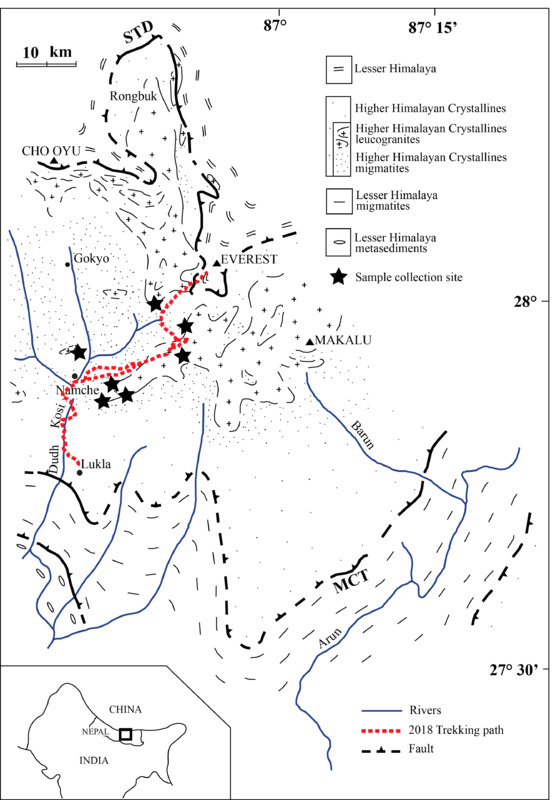
A map of the geological study site, including lithology type, major faults, and sample collection locations. Source: Brooklyn Boatright (modified from Pognante & Benna, 1993)
COLLECTION
Eight leucogranite samples were collected in-situ along the Mt. Everest Base Camp trekking route in May-June 2018. The path that was followed is outlined in red in the figure to the right. Sample collection locations are denoted by a star. Four samples were collected in Namche Bazaar, two samples were collected in Phortse, one sample was collected in Pheriche, and one sample did not have a recorded location. Because the Himalayan region is rife with glacial till, samples were collected in-situ to ensure that later analyses yield data accurate to the source of each leucogranite sample.
PREPARATION
Thin sections for six samples were made at National Petrographic Laboratory. Preparation for one sample was completed at Ball State University and followed standard mineral separation procedures as outlined by Malone et. al. (2014). The sample was crushed in a jaw crusher then pulverized in a disk mill. Crushing and pulverization was followed by gravity separation via Wilfley shaker table. Gravity separation removed lightweight compounds from the sample, leaving behind heavier minerals. Once the remaining sample has dried, a hand magnet can be used to remove large magnetic minerals and iron filings that may have been introduced by the jaw crusher and disk mill. The sample is then sent through a Frantz magnetic separator to remove any remaining heavy minerals with low magnetism. Zircon is a non-magnetic mineral so it is spared. Next, heavy liquid is used to separate minerals based on specific gravity. Zircon's high specific gravity (~4.7) means that it will sink to the bottom of the funnel while the remaining minerals float at the top of the heavy liquid. The portions that sank are removed from the funnel, rinsed with acetone, and appraised under a microscope. If significant heavy minerals (that are not zircon) remain, magnetic separation and heavy liquid separation is repeated.
The remaining samples were crushed and pulverized, then sent to the Arizona LaserChron Center (ALC) for preparation. ALC's standard mineral separation procedures are outlined in two documents, the first titled "ROCK CRUSHING & WATER TABLE INSTRUCTION MANUAL" and prepared by Pullen et. al. (2011). The second document is titled "MINERAL SEPARATION INSTRUCTION MANUAL" and was prepared by Simpson et. al. (2012).
ANALYSIS
Thin sections are currently undergoing analysis to be completed in October 2021. Hand-picked, grain-mounted zircons will be processed at University of Arizona's LaserChron Center by LA-ICP-MS to determine U-Th-Pb ages and Lu-Hf and t/REE geochemistry in May 2021.
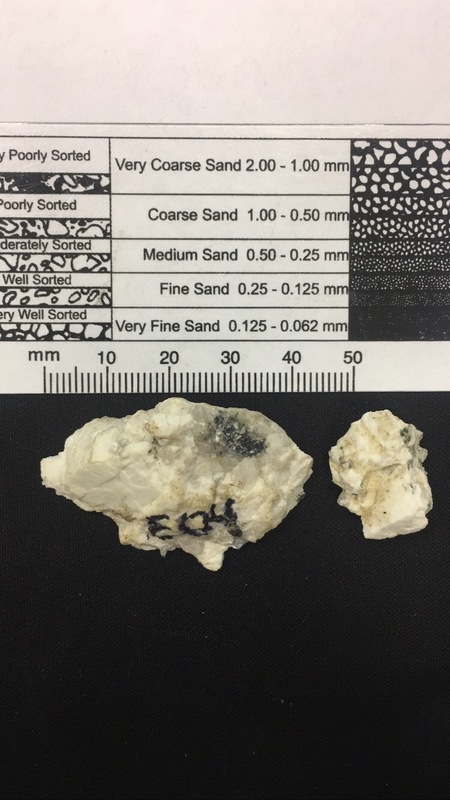
Leucogranite sample E04. Source: Brooklyn Boatright
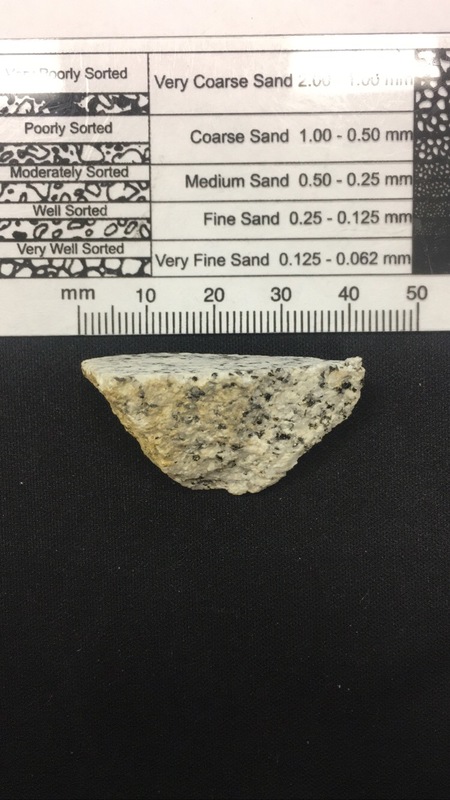
Leucogranite sample E05. Source: Brooklyn Boatright
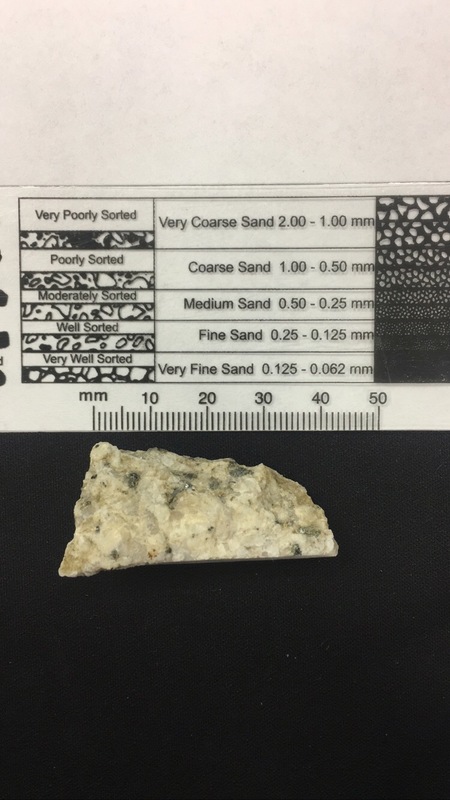
Leucogranite sample E06. Source: Brooklyn Boatright
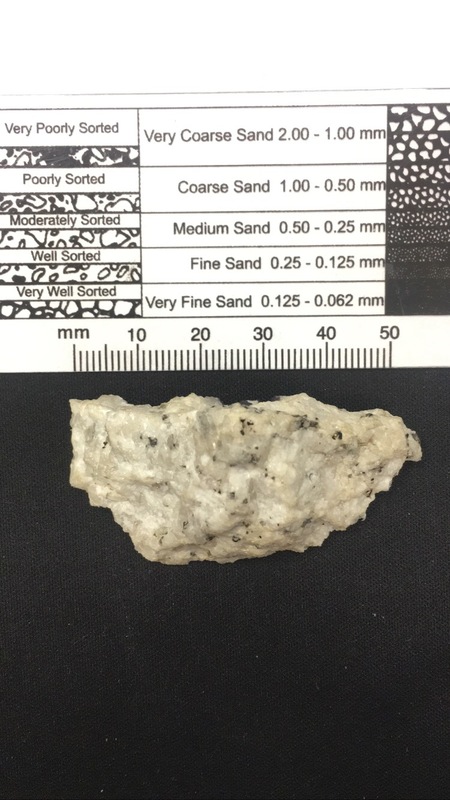
Leucogranite sample E07. Source: Brooklyn Boatright
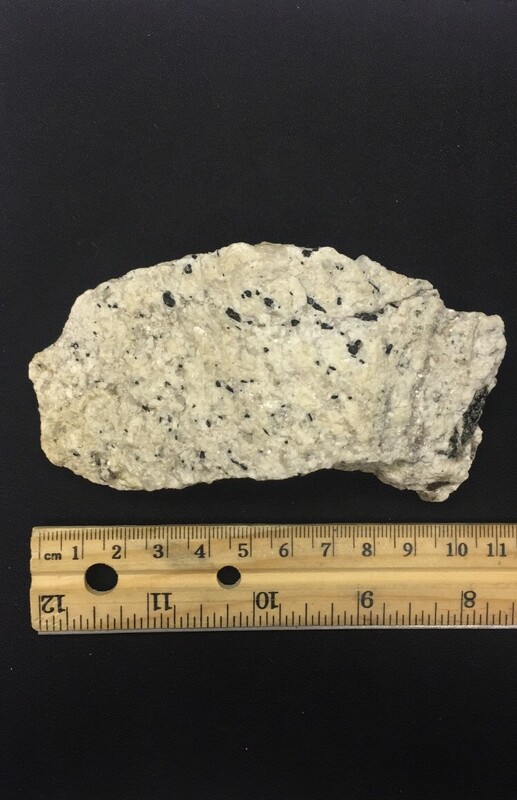
Leucogranite sample E08. Source: Brooklyn Boatright

Leucogranite sample E09. Source: Brooklyn Boatright
